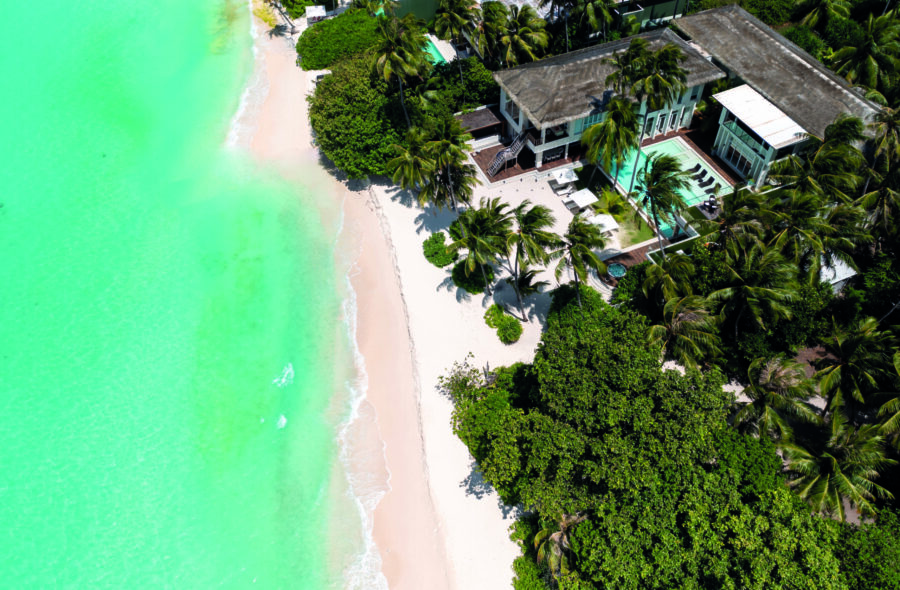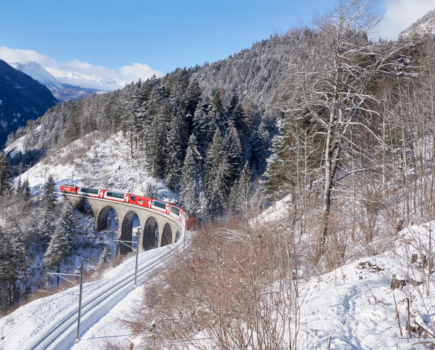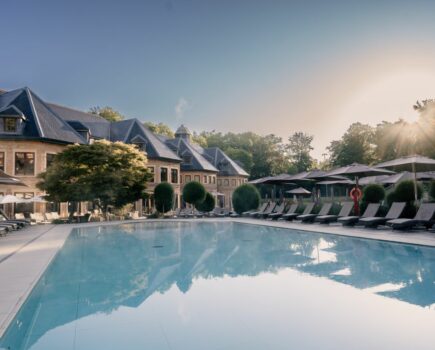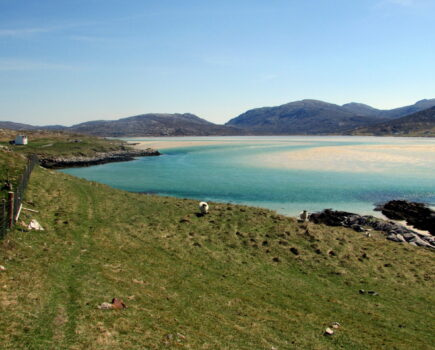Tamara Hinson checks out a hat trick of game-changing resorts in the Maldives.
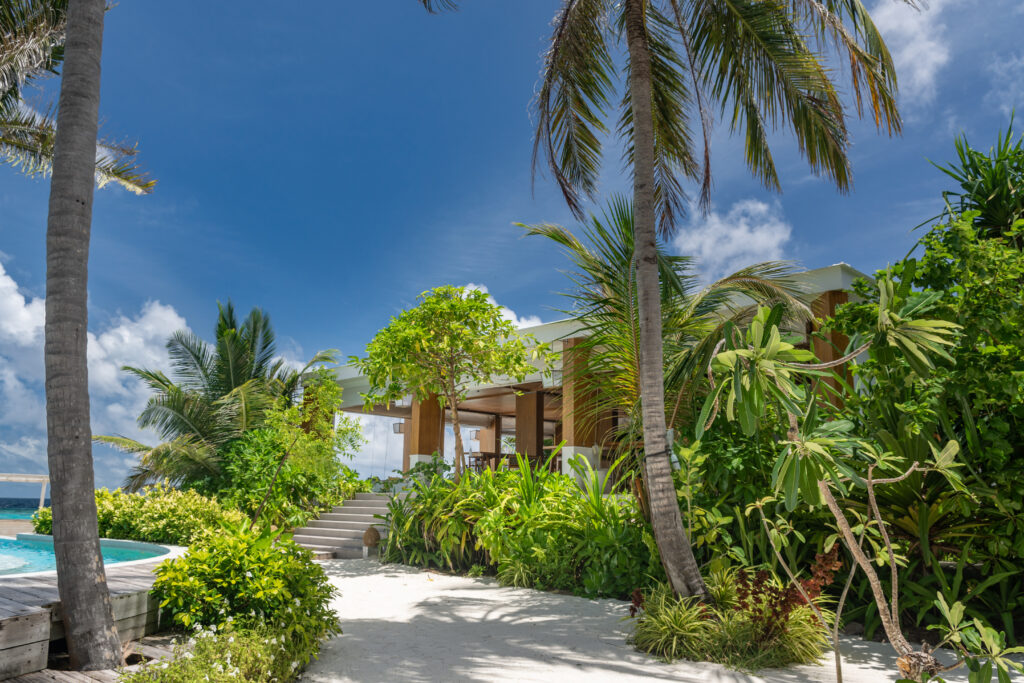
Amilla Maldives
For years, I dreamed of making it to the Maldives, promising myself that one day I’d laze on the decking of an over-water villa, gazing out to sea and relishing the knowledge that the hardest decision I’d have to make was which restaurant to dine at.
But there were also several factors which concerned me, starting with the irony of jumping in a fuel-guzzling jumbo to get to a destination at the forefront of the fight against global warming. Secondly, as a solo traveller, keen runner and someone who’s generally quite active I knew that, despite my dreams of over-water excess, the risk of boredom setting in was high.
I’ve known friends who’ve raved about tiny Maldivian islands with one restaurant, a handful of butler-serviced villas and no amenities to speak of. For me, that sounded like a fast track to island madness. Luckily, a growing number of Maldives resorts are catering to travellers who aren’t particularly bothered about butler service (which full disclosure, generally comes as standard in the Maldives, albeit conducted via WhatsApp and with various levels of attentiveness), but who place a high priority on fantastic food, sustainability and activities which don’t just keep boredom at bay, but which provide a deeper insight into the region, ideally giving back in some way.
An eco-friendly paradise
One of the best examples of the latter is Amilla Fushi on the Baa Atoll, a world-renowned magnet for manta rays, and a UNESCO Biosphere Reserve. Instead of twiddling their thumbs during the pandemic, when the resort closed for several months, the management overhauled its approach to sustainability. Their mission was aided by the island’s topography – Amilla Fushi is one of the Maldives’ largest, lushest islands and, incidentally, the only one to have treetop villas – stilted treehouse-like structures surrounded by vast swathes of greenery.
The Maldives, with its icing sugar sand and palm trees, lives up to the hype.
“We’re a naturally lush island with plenty of room to grow produce, so we wanted to make sure we utilised that,” says Victoria Kruse, sustainability manager. “The sustainability side expanded because no flights were coming in and we couldn’t get vegetables. Five months of cabbage and carrots was pretty harsh!” The island now has its own hydroponic garden, mushroom hut and banana plantation. Guests can help collect eggs from Amilla’s very own chicken coop –Cluckingham Palace – and there are plans for a coconut processing facility to produce materials such as coir rope from the island’s 2,500 coconut trees (their cream and oil is already used in the kitchens and spa).
Menus were also overhauled, with the goal being to slash waste. Dishes such as crispy tomato skins and caramelised basil stems have gone down a storm, as has the so-called ethical burger. “So much food is flown here, and it’s hard to get to zero food miles, but this is about as close as it gets,” says Victoria. I can report that it’s absolutely delicious – a patty of Tasmanian beef sourced from Cape Grim (known for having the world’s cleanest air), topped with island-grown mushrooms and homemade banana ketchup, dressed with a type of dandelion leaf that grows wild on the island and can help regulate carbohydrate, and sandwiched between a flaxseed cider vinegar roll. Equally delicious are the island’s homemade probiotic sodas and kombuchas.
Elsewhere, I gorge on sumptuous steaks (albeit ethically sourced ones) at the Barolo Grill, feast on Japanese fusion cuisine at the brilliant Japanese restaurant, Feeling Koi, and work my way through the resort’s encyclopaedia-like wine list, which lists everything from rare dessert wines to bottles of Roederer Cristal Brut (just don’t ask about the air miles involved with the latter).
A natural haven
The wonderful wilderness of Amilla, where I spend my days happily pedalling along the footpaths which criss-cross the island, is the reason I was slightly sceptical about the other resort on my hit-list. Patina Maldives, Fari Islands, a short boat transfer from Malé, is a high-end resort on an artificial island. Its owners are keen to prove that Maldivian resorts can be luxurious, while also having a community feel. One of three islands clustered close together, a free shuttle boat service whisks guests to the nearby Ritz-Carlton Maldives and will also link with the Capella Maldives, just across the water, when it opens in 2023.
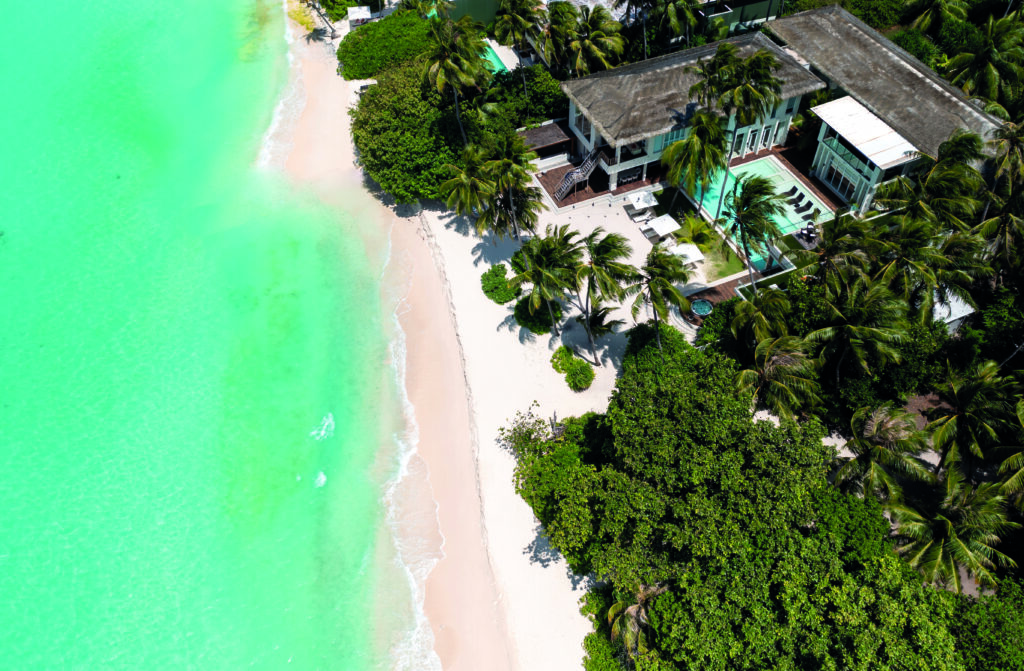
There’s much less greenery on Patina – although I’m assured it will come – but I suspect the wild, untamed look isn’t one which fits with the resort’s slick look. Opened in May 2021, it’s the first resort designed by Marcio Kogan, a Brazilian architect known for his love of low-slung structures with neat lines and a Palm Springs-inspired aesthetic. Everything – from the furniture on my balcony to the Pashley-style bicycles guests can use – is beautiful to look at. There’s even a supersized art installation: Skyspace Pavilion, by American artist James Turrell. Step across the sand into this wooden cube and you’ll see a large gap in the structure’s roof. Look through it and cleverly concealed lights make the clouds appear much closer.
Equally stunning is the Adastra, the resort’s spaceship-like yacht, the 12 restaurants and the beautiful Rake boutique created in collaboration with the luxury men’s magazine of the same name. I find it in the area known as Fari Marina Village, opposite a tuk-tuk dispensing free ice cream, and near the firepit which doubles as a setting for s’mores toasting sessions.
Another new concept is the block of hotel-style rooms known as Fari Studios – one of 11 room categories. An employee tells me they’re popular with parents who book an over-water villa for themselves and a studio for the kids, but they’re also apparently a hit with guests travelling with staff in tow. On my final day, I learn that a couple recently hired the island in its entirety for a wedding, covering the cost of accommodation and transport for all their guests. Suddenly, my own wedding looks rather plain.
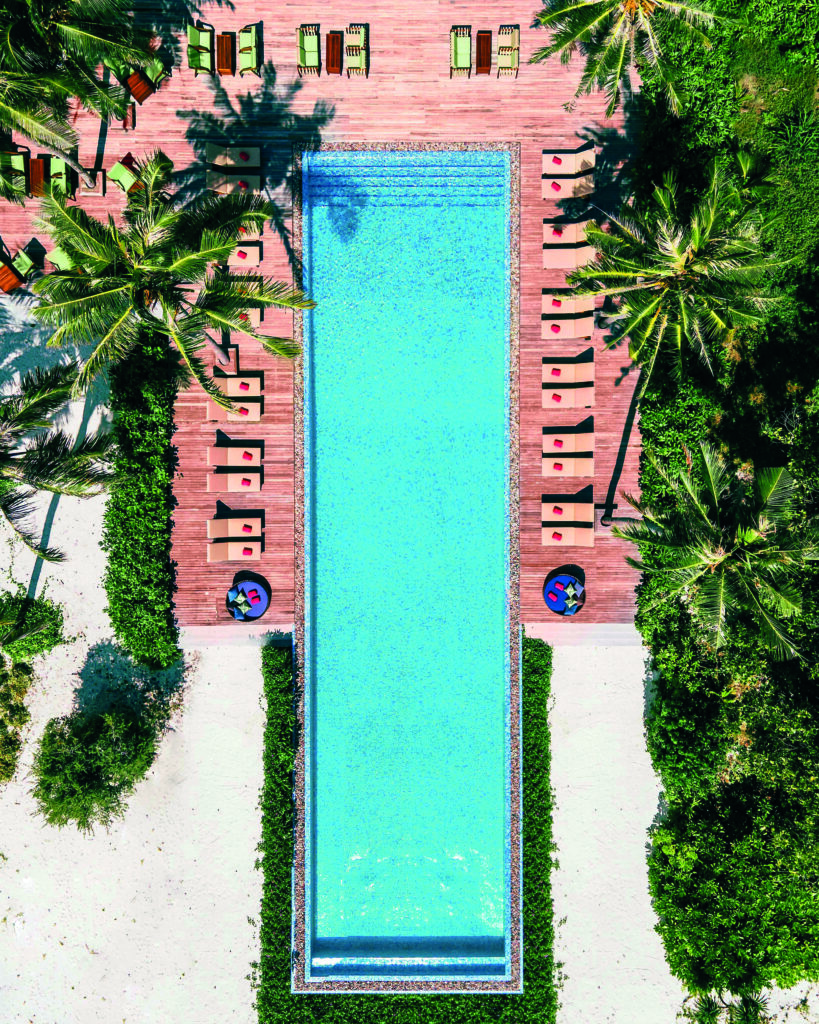
Siyam World, Maldives
When I told a close friend I was visiting an island resort with 21 room categories, a look of horror had crept across their face. My final resort is Noonu Atoll’s Siyam World, which covers 52 acres and is accessed via a combination of either domestic flight and speedboat or seaplane, and which became the Maldives’ largest resort when it opened in late 2021.
For me, it’s proof that bigger is definitely better. Yes, there are 472 villas, but its size means Siyam World never feels crowded, and I embark on daily Indiana Jones-inspired jaunts around the island. On one day, exploring the sandy tangle of footpaths, I find what appears to be the fenced-off ruins of a temple, and later learn that it’s the ruins of an ancient burial tomb.
In the evenings, I head to the island’s northern tip (the southern tip has the majority of the restaurants and bars) for solo sundowners at Mint, with its spectacular views over the Indian ocean.
On other days, I bounce across the supersized inflatable obstacle course (the world’s largest, featuring enormous, multi-coloured letters spelling out the word “Siyam”), sign up for a mixology class and attend a Maldivian leaf-folding workshop.
My one-bedroom beach villa – one of the aforementioned 21 room categories – might not appeal to those travelling with chefs in tow, but it was my favourite accommodation of the entire trip: a perfectly proportioned base with a beautiful outside shower and a large patio, beyond which a strip of sand – shielded from prying eyes by rows of swaying palms – led to the beach nearby.
On my final day, a realisation dawns: yes, the Maldives, with its swaying palm trees, over-water villas and sweeping curves of icing sugar sand, lives up to the hype. But the region’s increasingly innovative resorts also have so much more to offer, whether it’s mixology masterclasses or walking tours led by marine biologists. Admittedly, this realisation dawns while I’m sprawled on my sun lounger, sipping a cocktail and watching the sun sink between the row of over-water villas. Who knew mixology lessons could be such hard work?
How to get there
Returns from London the Heathrow to Malé start from £616 return with British Airways (britishairways.com).
Rates at Amilla Fushi start at £670 per night for a two-person Treetop Villa, including taxes.
amilla.com
Rates at Patina Maldives, Fari Islands start at £1,623 per night for a two-person Beach Pool Villa, including service and taxes.
patinahotels.com
Rates at Siyam World start at £431 per villa per night for a two-person water villa with pool on a Wow! Premium All-Inclusive basis, excluding taxes.
sunsiyam.com

